On the bench… the making of our Globe Tide pendant
On the bench today… the making of our Globe Tide pendant (with cuttlefish casting!)
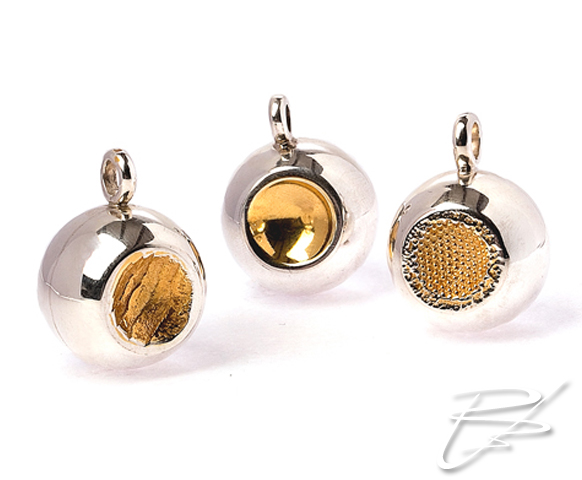
The workshop is always buzzing with activity. The sound of hammering, sawing and polishing spill into the shop but it’s not often we get the chance to sneak next door and observe an ancient jewellery making technique in action! Cuttlefish casting is used to make the gold plated discs in our Globe Tide pendant and here’s a sneak peek into how it’s done.
Cuttlefish, found washed upon beaches, have the ideal hard, boney exterior with a soft, carvable interior which can withstand very high temperatures. The perfect organic mould!
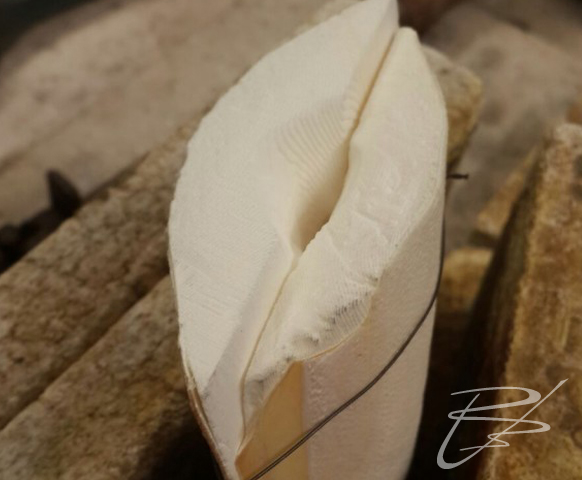
Cuttle Fish mould
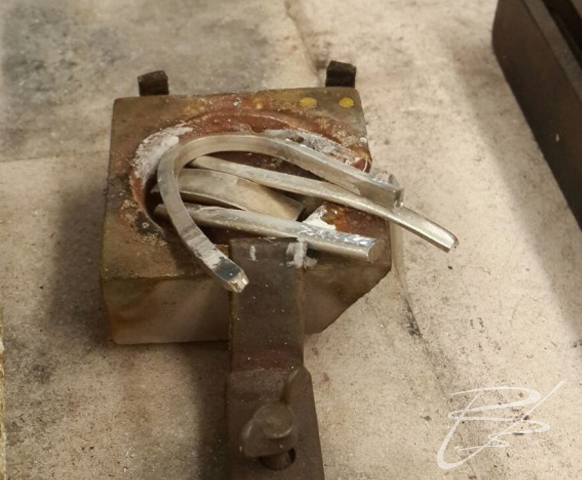
Silver pieces ready for melting
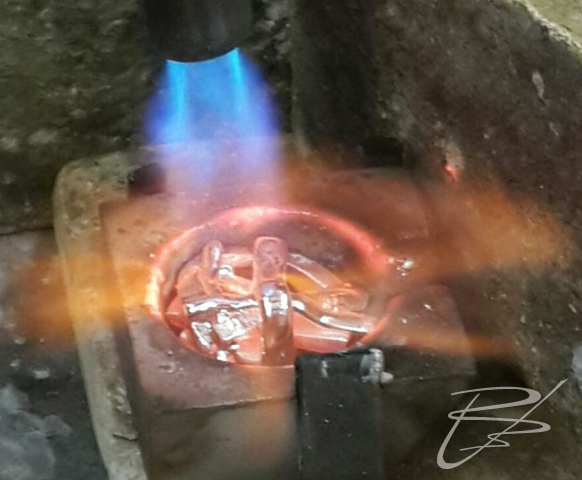
The temperature is rising! This can take a few minutes but is fascinating to watch
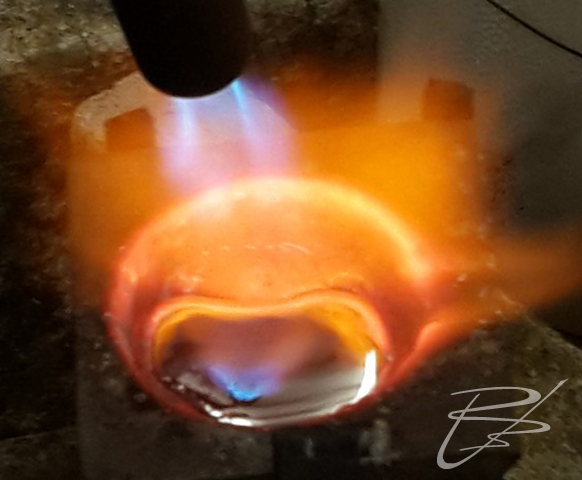
The silver ‘balls’ into a liquid at around 800-900 degrees and is ready to pour into the mould
Click here to see a short snippet of the pouring process >>
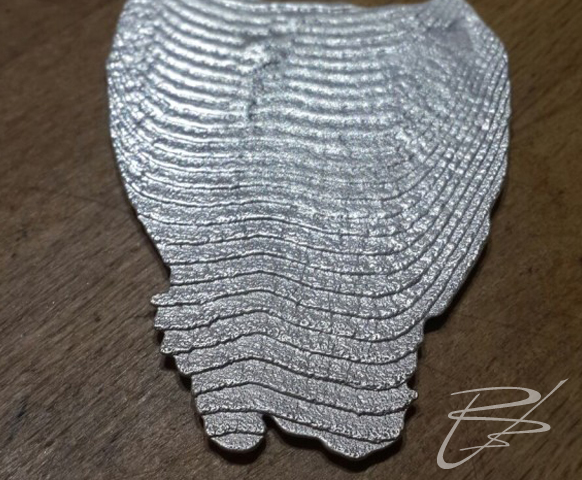
The cooled silver is released from the mould to reveal with a beautiful ridge textured surface
A section of this will then be cut into a disc and shaped. Next a coating of 18ct yellow gold provides a rich contrast to the smooth silver sphere it will be fitted to.

Silver sphere halves ready to be joined together with the moulded insert
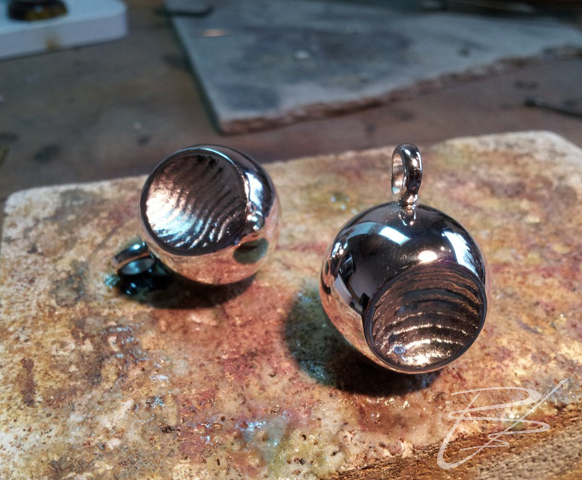
The finished piece, ready for plating in 18ct yellow gold
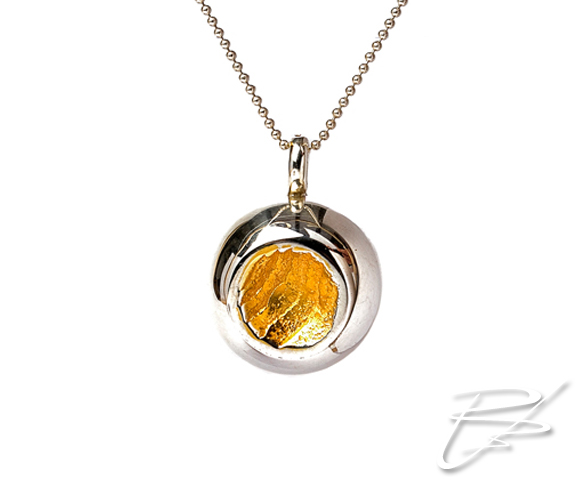
The finished pendant on a silver ball chain. Lovely!
If this post inspires you then please check details about our 2 day Casting Course listed on our website under Wax Casting (the second day covers cuttlefish casting).





